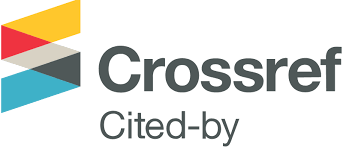The synthesis, analgesic and anti-inflammatory activity of 3-aryl(heteryl)-2-(6,7,8,9-tetrahydro-5H-[1,2,4]triazolo[4,3-a]azepin-3-yl)-acrylonitrile derivatives.
DOI:
https://doi.org/10.24959/ophcj.20.193511Keywords:
3-(het)aryl-2-(6, 7, 8, 9-tetrahydro-5H-[1, 2, 4]triazolo[4, 3-a]azepin-3-yl)acrylonitrile derivatives, ketorolac, analgesic activity, anti-inflammatory activityAbstract
Aim. To synthesize, prove the structure and study the analgesic and anti-inflammatory activities of 3-(het)-aryl-2-(6,7,8,9-tetrahydro-5H-[1,2,4]triazolo[4,3-a]azepin-3-yl)acrylonitrile derivatives.
Results and discussion. Condensation of 2-methoxy-3,4,5,6-tetrahydro-7H-azepine with cyanoacetic acid hydrazide leads to formation of 2-(6,7,8,9-tetrahydro-5H-[1,2,4]triazolo[4,3-a]azepin-3-yl)acetonitrile. The latter readily reacts with the corresponding (het)arenecarbaldehydes in refluxing ethanol in the presence of catalytic amount of piperidine yielding a series of new 3-(het)aryl-2-(6,7,8,9-tetrahydro-5H-[1,2,4]triazolo[4,3-a]azepin-3-yl)acrylonitrile derivatives. Further functionalization of 3-(4-hydroxy-3-R-phenyl)-2-(6,7,8,9-tetrahydro-5H-[1,2,4]triazolo[4,3-a]azepin-3-yl)acrylonitriles has been done by modification of the OH group. One of the compounds synthesized, namely 3-(4-hydroxyphenyl)-2-(6,7,8,9-tetrahydro-5H-[1,2,4]triazolo[4,3-a]azepin-3-yl)acrylonitrile, exhibits a high level of the analgesic activity on the “hot plate” model, and a similar level of the activity on the model of “acetic acid-induced writhings” as compared to ketorolac. The results obtained indicate the pronounced antinociceptive activity for the test compound.
Experimental part. 1H NMR spectra of the compounds synthesized were recorded on a Bruker VXR-300 spectrometer (Germany) operating at a frequency of 299.945 MHz, in DMSO-d6, using tetramethylsilane (TMS) as an internal standard. Melting points were measured using a RNMK 05 device (VEB Analytik,Dresden). The elemental analysis was performed on a EuroEA 3000 elemental analyzer. The analgesic and anti-inflammatory activities of 3-(4-hydroxyphenyl)-2-(6,7,8,9-tetrahydro-5H-[1,2,4]triazolo[4,3-a]azepin-3-yl)acrylonitrile were determined using models of “carrageenan induced paw edema”, ”hot plate” and “acetic acid-induced writhings”, and compared to the reference drug ketorolac.
Conclusions. A series of new 3-(het)aryl-2-(6,7,8,9-tetrahydro-5H-[1,2,4]triazolo[4,3-a]azepin-3-yl)acrylonitrile derivatives can be easily synthesized by the interaction of 2-(6,7,8,9-tetrahydro-5H-[1,2,4]triazolo[4,3-a]azepin-3-yl)acetonitrile with (het)arenecarbaldehydes. The hydroxy group in 3-(4-hydroxy-3-R-phenyl)-2-(6,7,8,9-tetrahydro-5H-[1,2,4]triazolo[4,3-a]azepin-3-yl)acrylonitriles can be modified to obtain phenyl esters of aliphatic and aromatic carboxylic acids. The high level of the analgesic activity for 3-(4-hydroxyphenyl)-2-(6,7,8,9-tetrahydro-5H-[1,2,4]triazolo[4,3-a]azepin-3-yl)acrylonitrile has been determined.
Received: 30.01.2020
Revised: 17.05.2020
Accepted: 29.05.2020
Supporting Agencies
- The theme of the NAMS of Ukraine “Pharmaco-mathematical analysis of analgesic and anti-inflammatory action of derivatives of mono-
- di- and tricyclic nitrgogen containing heterocycles for directed search for new BAS”
Downloads
References
- Kaplan, B.; Swain, R. A. NSAIDs: Are There Any Differences? Archives of Family Medicine 1993, 2 (11), 1167–1174.
- Bacchi, S.; Palumbo, P.; Sponta, A.; Coppolino, M. F. Clinical Pharmacology of Non-Steroidal Anti-Inflammatory Drugs: A Review. Anti-Inflammatory Anti-Allergy Agents Med. Chem. 2012, 11 (1), 52–64. http://dx.doi.org/10.2174/187152312803476255.
- Sostres, C.; Gargallo, C. J.; Arroyo, M. T.; Lanas, A. Adverse effects of non-steroidal anti-inflammatory drugs (NSAIDs, aspirin and coxibs) on upper gastrointestinal tract. Best Pract. Res., Clin. Gastroenterol. 2010, 24 (2), 121–132. https://doi.org/10.1016/j.bpg.2009.11.005.
- Conaghan, P. G. A turbulent decade for NSAIDs: update on current concepts of classification, epidemiology, comparative efficacy, and toxicity. Rheumatol. Int. 2012, 32 (6), 1491–1502. https://doi.org/10.1007/s00296-011-2263-6.
- Demchenko, S. A.; Yeromina, H. O.; Perekhoda, L. O.; Bukhtiarova, T. A.; Bobkova, L. S.; Demchenko, A. M. Synthesis and anаlgеsic properties of (3-allyl-4-aryl-3H-thiazol-2-ylidene)-[4-(6,7,8,9-tetrahydro-5H-[1,2,4]triazolo[4,3-a]azepin-3-yl)phenyl]amine derivatives. Farm. Zh. 2018, 1, 67–73. https://doi.org/10.32352/0367-3057.1.17.09.
- Демченко, С. А.; Ядловський, О. Є.; Бухтіарова, Т. А.; Серединська, Н. М.; Голубов, М. І.; Демченко, А. М. 3-(4-Гідроксифеніл)-2-(6,7,8,9-тетрагідро-5Н-[4,3-а]азепін-3-іл)акрилонітрил, що проявляє анальгетичну та протизапальну активності. Патент України 120416, Листоп 25, 2019.
- Lyon, C.; Claus, L. W. Less is more when it comes to ketorolac for pain. The Journal of Family Practice 2019, 1, 41–42.
- Стефанов, В. Доклінічні дослідження лікарських засобів; Авіценна: Київ, 2001.
- Komlos, E.; Porszasz, J.; Knoll, J. Morfin–prostigmin synergismus. Acta Physiol. Acad. Sci. Hung. 1950, 1 (1), 77–90.
- Wood, P. L. Animal models in analgesic testing. In Analgesics: Neurochemical, Behavioral and Clinical Perspectives; Kuhar, M., Pasternak, J., Eds.; Raven Press: New-York, 1984; Vol. 42, pp 175–194.
- Тринус, Ф. П.; Мохорт, Н. А.; Клебанов, Б. М. Нестероидные противовоспалительные средства; Здоров’я: Київ, 1975.
- Лапач, С. Н.; Чубенко, А. В.; Бабич, П. Н. Статистика в науке и бизнесе; Морион: Київ, 2002.
- Vogel, H. G. Drug Discovery and Evaluation: Pharmacological Assays. 2 ed.; Springer-Verlag Berlin Heidelberg: New York, 2002. https://doi.org/10.1007/3-540-29837-1.
- Petersen, S.; Tietze, E. Reaktionen Cyclischer Lactimäther mit Acylierten Hydrazinderivaten. Chem. Ber. 1957, 90 (6), 909–921. https://doi.org/10.1002/cber.19570900609.
Downloads
Published
How to Cite
Issue
Section
License
Copyright (c) 2020 National University of Pharmacy

This work is licensed under a Creative Commons Attribution 4.0 International License.
Authors publishing their works in the Journal of Organic and Pharmaceutical Chemistry agree with the following terms:
1. Authors retain copyright and grant the journal the right of the first publication of the work under Creative Commons Attribution License allowing everyone to distribute and re-use the published material if proper citation of the original publication is given.
2. Authors are able to enter into separate, additional contractual arrangements for the non-exclusive distribution of the journal’s published version of the work (e.g., post it to an institutional repository or publish it in a book) providing proper citation of the original publication.
3. Authors are permitted and encouraged to post their work online (e.g. in institutional repositories or on authors’ personal websites) prior to and during the submission process, as it can lead to productive exchanges, as well as earlier and greater citation of published work (see The Effect of Open Access).














